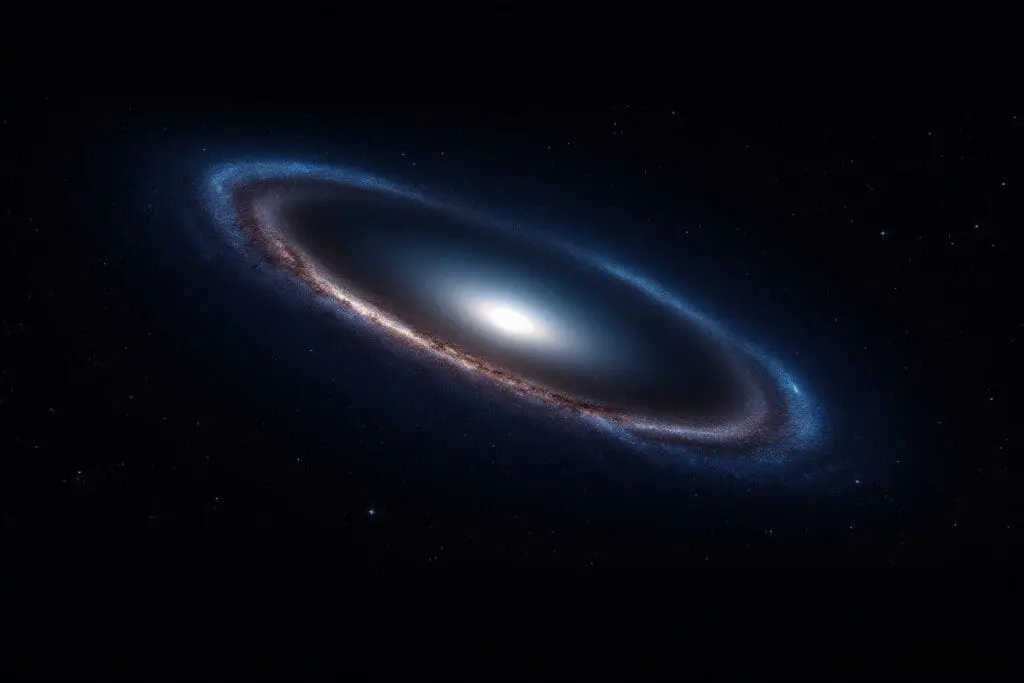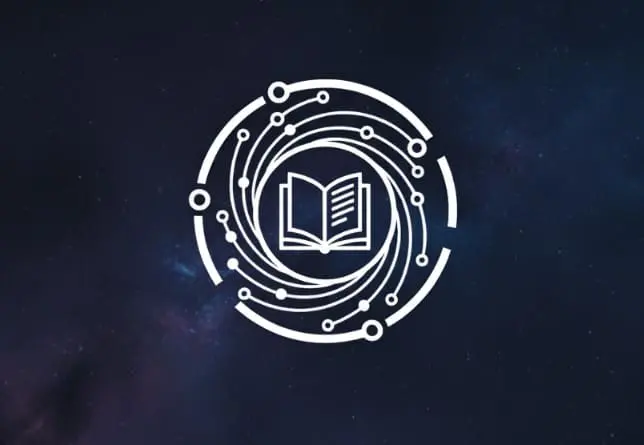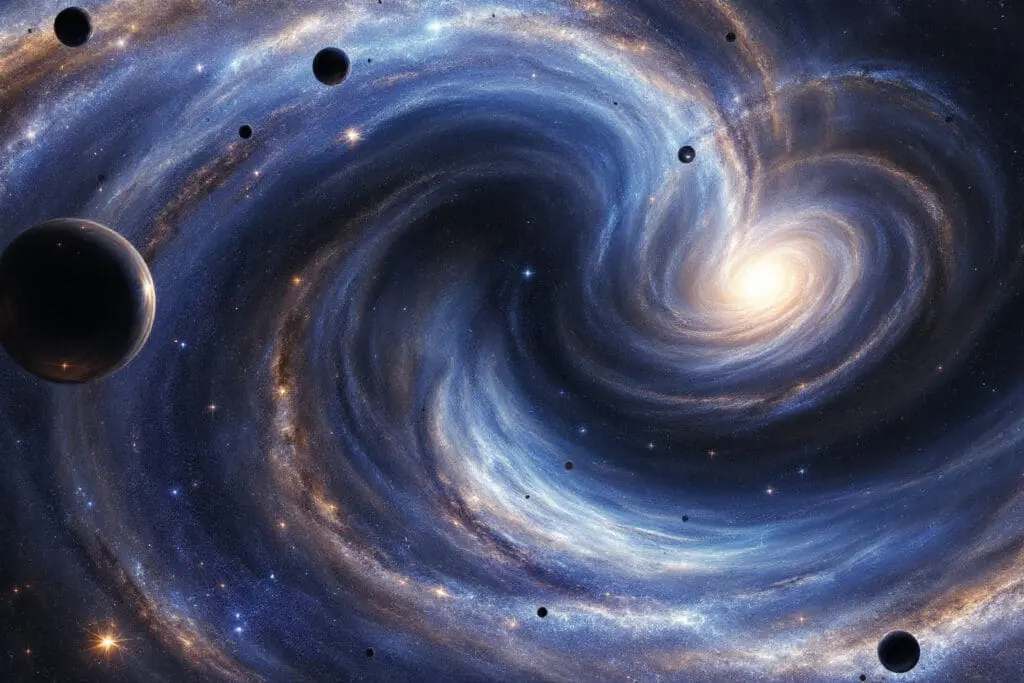Ever stood on a sidewalk as an ambulance screamed past? You know that sound. The siren’s pitch climbs higher and higher as it rushes toward you, then suddenly drops the moment it passes. That everyday shift in sound is your first clue to understanding a massive cosmic secret—one of the key ways we measure the movement of the entire universe. Light, just like sound, travels in waves.
Those waves can be stretched and squeezed by motion. This simple act of stretching and squeezing tells an incredible story about stars and galaxies hurtling through the void. So, when does blueshift happen? It happens when the story is one of approach. It’s the universe’s signal that something out there is headed our way.
More in Cosmic Physics Category
The True Nature of Light in Space
How Spectrometry Analyzes Stars
The Doppler Effect with Light in Space
Key Takeaways
- Blueshift is a sign of approach. When a light source moves toward us, its light waves get compressed, decreasing their wavelength and shifting them toward the blue part of the spectrum.
- It’s the Doppler effect for light. You’ve heard this with sound, but the same rule applies to light. An approaching object’s light has a higher frequency (it’s bluer), while a receding object’s light has a lower frequency (it’s redder).
- It tells us who our neighbors are. Blueshift is our primary flag that a star, galaxy, or other cosmic body is moving closer to Earth.
- Andromeda is the prime example. Our biggest galactic neighbor is blueshifted. It’s on a 4.5-billion-year collision course with our own Milky Way.
- It’s the exception, not the rule. On the grandest scale, the universe is expanding, making most distant galaxies redshifted. Blueshift reveals the local spots where gravity is strong enough to pull things together.
Have You Ever Heard an Ambulance Siren Change Pitch?
That high-pitched whine of an approaching emergency vehicle is unmistakable. You don’t even need to see it; the sound alone tells you it’s getting closer. The instant it passes, the pitch plummets to a lower-frequency wail. Your ears knew it was moving away. That’s the Doppler effect. Simple as that.
The siren itself isn’t changing its tune. It blasts out sound waves at a perfectly constant frequency. But as the ambulance speeds toward you, it’s basically catching up to its own sound waves. It squishes them together, shortening the distance between each wave. Your ear interprets that shorter wavelength as a higher pitch. Then, as it races away, it’s outrunning its sound waves, stretching them out. Your ear hears this longer wavelength as a lower pitch.
It’s an intuitive, everyday experience.
So, How Does This Apply to Light?
Light behaves in the exact same way. It’s an electromagnetic wave, and its journey can be compressed or stretched by motion, just like sound. But instead of the pitch changing, the color of the light appears to shift.
Picture the visible light spectrum as a rainbow. Red is on one end, blue and violet are on the other. Red light has the longest wavelengths, while blue has some of the shortest. When a star moves toward us, its light waves get compressed. This cosmic squeeze shortens their wavelength, nudging them toward the blue end of the spectrum.
Astronomers call this phenomenon a blueshift.
What Exactly Is Happening to Light During a Blueshift?
Let’s break it down. Imagine you’re playing catch with a friend. If they stand still and throw a tennis ball at you once every second, the balls arrive at a steady, predictable rhythm. Now, what if your friend starts walking toward you while still throwing one ball per second? The balls will start arriving faster—maybe one every half-second. The throws haven’t changed, but because the distance is shrinking, their arrival time has.
Light travels in little packets called photons, which act like waves. When a star is moving toward Earth, it’s closing the gap its own light needs to cross. Each new light wave it sends out begins its journey from a point in space that’s slightly closer to us than the one before it.
This crowds the waves together.
The result? More wave crests hit our telescopes every second. This increase in frequency (which means a decrease in wavelength) is the blueshift. It’s a direct, physical consequence of an object moving through space toward us.
Does the Star Actually Turn Blue?
Great question. It’s a common mix-up. The answer is a simple no. A blueshifted star doesn’t necessarily look blue. The term “blueshift” can be a bit misleading; it means the star’s entire spectrum of light gets nudged in the direction of blue, not that its color fundamentally changes.
Take a star that’s naturally yellow. It emits light across many wavelengths, but it shines brightest in the yellow part of the spectrum. If that star is hurtling toward us, its whole light signature gets shifted.
Its peak brightness might move from yellow to a slightly greenish-yellow. An infrared signal it gives off might get shifted up into the visible red light we can see. The change is usually so tiny that it’s completely invisible to our eyes. We need incredibly sensitive instruments to spot this subtle nudge in the cosmic light.
Why Do We Call It ‘Blueshift’?
The name is purely a convention based on the rainbow of colors we can see. We all learned the visible spectrum in school: Red, Orange, Yellow, Green, Blue, Indigo, Violet (ROYGBIV).
On this spectrum, red light has the longest wavelengths, and blue/violet light has the shortest. Since an approaching object shortens the wavelength of its light, we just say it’s shifted toward the blue end.
Technically, it could have been called “violetshift,” since violet’s wavelength is even shorter. But our eyes are more sensitive to blue, and many of the early photographic plates astronomers used were also better at detecting blue light. For those simple, practical reasons, “blueshift” became the go-to term for any shift toward a shorter wavelength, even for light we can’t see.
Can We See Blueshift with Our Own Eyes?
When looking at things in space? Almost definitely not. The speeds are immense to us, but they’re still just a tiny fraction of the speed of light. That means the resulting shift in wavelength is incredibly small. A star would have to be approaching at a truly mind-boggling speed for us to notice a color change just by looking at it.
So, how do scientists even know it’s happening?
They use a powerful technique called spectroscopy. They attach an instrument called a spectrograph to a telescope, which takes the starlight and splits it into a full rainbow, just like a prism. But this isn’t a clean, perfect rainbow. Stamped across it are thin, dark lines.
What Do Dark Lines in a Rainbow Have to Do with Motion?
Those dark lines are the key. Known as absorption lines, they are like cosmic fingerprints. Every chemical element—hydrogen, helium, calcium, you name it—absorbs light at very specific, unchangeable wavelengths when it’s in a star’s atmosphere.
When we analyze a star’s spectrum in a lab, those dark lines for hydrogen always appear at the exact same positions. It’s the star’s “at-rest” fingerprint.
But when we look at a star moving toward us, we see that same unique pattern of lines, but the whole fingerprint has been shifted slightly toward the blue end of the spectrum. The pattern is the same, but its location has moved. By measuring exactly how much those lines have shifted from where they’re supposed to be, astronomers can calculate the star’s radial velocity—the speed at which it’s moving directly toward or away from us.
Are There Real-World Examples of Blueshift in Space?
You bet. While redshift dominates the big picture of the universe, our local cosmic neighborhood is a bustling place with plenty of things headed our way.
The most famous example is the Andromeda Galaxy. Known as M31, this stunning spiral is our closest major galactic neighbor, about 2.5 million light-years away. And it’s coming right for us. Observations of Andromeda’s spectrum show a clear, strong blueshift. From this, astronomers know it’s barreling toward the Milky Way at about 250,000 miles per hour. The collision and eventual merger of our two galaxies, an event nicknamed “Milkomeda,” is set to begin in about 4.5 billion years. For more on this, NASA provides a great in-depth look at this future cosmic smash-up.
It’s not just whole galaxies, either. Stars inside our own Milky Way are constantly zipping around the galactic center. From where we sit, some of those stars are on a part of their orbital path that carries them toward us. Barnard’s Star, one of the closest stars to our Sun, is a perfect example. It shows a significant blueshift, telling us it’s getting closer every day.
Wait, Isn’t the Universe Expanding? Shouldn’t Everything Be Moving Away?
This is a fantastic question and gets to the heart of the matter. On the largest scales, the universe is absolutely expanding. Spacetime itself is stretching, carrying distant galaxies away from us like dots on an inflating balloon. This is called cosmological redshift. It’s why nearly every distant galaxy we see is redshifted.
But on local scales, gravity is still the boss.
Imagine you’re baking raisin bread. As the dough rises and expands, all the raisins move farther apart from each other. That’s the expanding universe. But what if two raisins are so close that their own gooey stickiness (gravity) is stronger than the force of the rising dough between them? They’ll stay clumped together, even as the rest of the loaf expands around them.
Our Local Group of galaxies, which includes the Milky Way and Andromeda, is that clump of raisins. We are a gravitationally bound family. The immense gravitational pull between our two galaxies easily overpowers the gentle stretch of cosmic expansion at this distance. So, while the rest of the universe pulls away, gravity is yanking Andromeda straight toward us, causing a blueshift.
How Do Astronomers Calculate Speed from Blueshift?
The math here is surprisingly straightforward. The connection is direct: the bigger the blueshift, the faster the object is approaching.
Scientists use a spectrograph to measure the exact wavelength of a spectral line from an incoming star. They then compare it to the known wavelength of that same line measured here on Earth (the “rest” wavelength). The tiny difference between those two numbers reveals the size of the shift.
They plug that number into the Doppler formula. It’s an equation that connects the change in wavelength directly to the object’s speed relative to the speed of light. This gives them the radial velocity—the object’s speed right along our line of sight. It’s a precise and powerful tool for mapping the complex dance of the cosmos.
What Can Blueshift Tell Us Besides Just Speed?
Measuring an object’s speed is just the start. Blueshift is a versatile cosmic tool that unlocks all sorts of secrets.
- Measuring How Galaxies Spin: When we look at a tilted spiral galaxy, we can measure the motion of its arms. The side of the galaxy spinning toward us will be blueshifted, while the other side, spinning away, will be redshifted. By comparing the two, we can figure out exactly how fast that entire galaxy is rotating.
- Finding Hidden Stars: Many stars live in pairs, called binary stars, orbiting each other. Often, they’re too close for our telescopes to see them as two separate points of light. But as they dance around, one star will move toward us (blueshift) while its partner moves away (redshift). Then they’ll swap. This rhythmic back-and-forth shifting of their light reveals their hidden nature and lets us calculate their orbits and even their masses.
- Discovering New Worlds: One of the best ways to find planets around other stars is the “radial velocity” method. A big planet’s gravity doesn’t just pull on things; it also pulls on its own star, making the star “wobble” slightly. From here on Earth, that wobble looks like the star is periodically moving a little bit toward us and then a little bit away. Astronomers can detect this tiny, repeating pattern of blueshifting and redshifting, which screams that an unseen planet is there.
Is Blueshift Only for Visible Light?
Not a chance. The Doppler effect works across the entire electromagnetic spectrum, from long radio waves to short, high-energy gamma rays. A blueshift is simply any shift toward a shorter wavelength, no matter what kind of light it is.
For example, if a black hole is spitting out X-rays while moving toward us, those X-rays will be blueshifted. Their wavelengths will become even shorter, and we’ll detect them as higher-energy X-rays. The principle is exactly the same; we just use different kinds of telescopes to see it.
So What’s the Opposite of Blueshift?
You’ve probably figured it out by now. The direct opposite of blueshift is redshift. It’s what happens when an object is moving away from you.
In that case, the light waves get stretched out. Their wavelength gets longer, and their frequency gets lower. This shifts the object’s spectral fingerprint toward the red end of the spectrum. Redshift is what we see from nearly all distant galaxies, and it stands as the key piece of evidence that our universe is expanding.
Blueshift shows us the exceptions to that cosmic rule. It highlights where gravity is still winning the fight, pulling things together even as the universe tries to tear everything apart.
Does That Make Blueshift Rare?
On a truly massive, intergalactic scale, yes, blueshift is the odd one out. The constant expansion of spacetime ensures that most galaxy clusters are moving away from all other clusters.
But within those gravitationally bound clusters—within our own cosmic backyard—blueshift is happening constantly. Stars are whipping around inside their galaxies. Galaxies are jostling for position within their local groups. Gas clouds are collapsing in on themselves to forge new stars. All of these local movements produce blueshifts from matter that happens to be heading in our direction.
Blueshift is the signature of a close encounter.
So, the next time you look up at the night sky, remember that it’s not a static painting. It’s a chaotic ballet of unimaginable motion. It’s a universe of things rushing away and, in a few special cases, things coming closer, their silent approach written in the light itself.
FAQ – When Does Blueshift Happen

Why is most of the universe redshifted while some nearby objects are blueshifted?
Most of the universe is expanding, causing distant galaxies to move away from us and appear redshifted. However, nearby objects like the Andromeda Galaxy are gravitationally attracted toward us, resulting in blueshift.
How do astronomers detect blueshift if it’s not visible to the naked eye?
Astronomers use spectroscopy with instruments called spectrographs to analyze the light from stars and galaxies. By examining the shifts in dark lines within the spectrum, they can calculate the object’s motion toward us.
Can we see blueshift with the naked eye?
No, blueshift is typically too small to be observed directly with the naked eye because the changes in wavelength are usually very subtle due to the high speeds involved.
How does blueshift differ from redshift?
Blueshift occurs when a light source approaches Earth, causing its light waves to compress and shift toward blue, while redshift occurs when a source recedes, stretching light waves toward red.
What is blueshift in astronomy?
Blueshift in astronomy refers to the phenomenon where light from a celestial object shifts toward the blue end of the spectrum, indicating that the object is moving closer to us.

